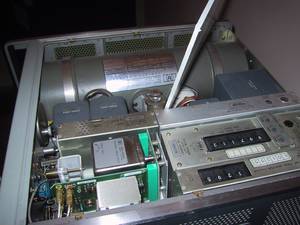Tics in an atom
2008/12/01 Roa Zubia, Guillermo - Elhuyar Zientzia Iturria: Elhuyar aldizkaria
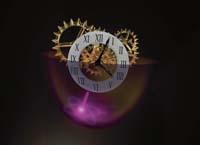
The oscillation of cesium atoms marks the official time of all the states of the world. In Europe, for example, this work is carried out by a network of atomic clocks. There are approximately 300 watches, of which the most important are those of the German PTB, the German Metrology Centre.
The truth is that there is a 33 second gap between the official time this network takes and the times that are used in practice, due to the introduction of atomic clocks.
The network of atomic clocks devotes a time called International Atomic Time, International Atomic Time. "That's the best time scale man offers," says Robert Wynands, a German PTB expert. However, before using these atomic clocks, the definition of the second was based on astronomical observations, calculated with the average data of the 200 year observations.
Earth is not a clock
The exact measurement of Earth Day allows you to define the time, minute and second. However, in 200 years the Earth's rotation has changed due to its constant evolution. The friction of the tidal force of the Moon is slowing, so the day is elongating because the Earth takes longer to make a tour (in the time of the dinosaurs the day was about 23 hours and the year was 380 days). Finally, the second and second astronomical ones defined by the oscillation of the cesium atom are not the same, which causes a gap of 33 seconds.
When they defined the second atomic there was no difference between them, but they gave it the same value as the second astronomical. "Any other decision would be a nonsense," says Wynands. But then the value of the second astronomical changed. The lag increases daily by 1.5 milliseconds or similar, reaching a second in approximately two years. At that time, the astronomical scale of time stops for a second to adapt to the rotation of the Earth, but not the network of atomic clocks. This has already happened 33 times, so the current gap is 33 seconds, but over the years it will grow.
The time used to determine the official timeline of States, World Time, depends on the second astronomical. And the official time in Europe, Central European Time, but with a gap of one hour.
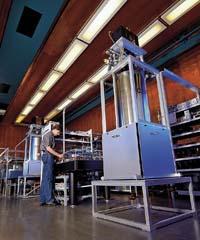
In the end, you have to correct the scales from time to time and it is not serious to have two definitions of a second. In any case, both definitions are necessary. One is astronomical, practical and changing; the other, atomic, does not change, but therefore does not adapt to the movement of the Earth.
However, the only advantage of the atomic definition is that it does not vary. In addition, as determined by atomic clocks, time measurement is accurate. The most concrete we know today.
Making time
Experts say that a watch has two parts, one moves or changes regularly and the other counts the cycles of that frequency. Equally not all watches fill it, for example, a hourglass only has the first part. But all modern watches have their two parts. For example, in clocks based on the pendulum, the first part is the pendulum itself, since it is the device that marks the frequency, and the second, the mechanism of the clock, the wheels that count the displacements of the pendulum, that count these displacements and transmit the information of the count to a sphere.
The general rule is that the higher the frequency of use of the technique, the more accurate the clock. The most accurate timepiece made by man uses cesium atoms to work the pendulum. Typical pendulums made cycles of a second, while the cesium atom, when in certain conditions, performs millions of cycles in a second.
In fact, currently the cesium atom is used to define the second. Depending on the energy given to it, the cesium-133 isotope may be in two situations at a certain temperature. To be in the state of higher energy, of course, the atom must absorb a quantity of energy. And when it releases that same amount, the energy passes to the lowest state. Hence the definition of second: the exact time it takes to make this change of state 9.192.631.770 times is one second. And, of course, the device that can produce and count incidents of the atom is called an atomic clock.
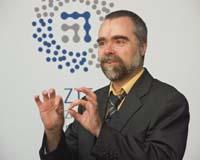
The advantage of using the oscillation of an atom is the obtained precision. The most accurate clock in the world is in Paris, with a mistake of only a second in 80 million years. The error of a quartz watch is about 10 seconds a year. And the best mechanical watch also does not approach the precision of the quartz watch.
"No matter what you paid for your Rolex watch. Buy a cheap quartz watch and you'll have a much better watch, one hundred times more accurate than the most expensive Rolex," explains Wynands.
Yes, but the mechanical watch also provides the necessary precision for everyday life. Why do we need a clock capable of measuring the trillion of a second if not to perform concrete physics experiments? Well, in the day to day this precision is essential, especially for a correct synchronization of the signals.
Three examples
Synchronizing signals means synchronizing waves. Mobile phone calls, radio signals, AC and many other signals are waves. And devices that manage these signals often receive two or more signals at the same time. Because they are waves, there is a risk that the interferences between them will be destructive and synchronize is to avoid destructive interference.
The bases that manage mobile phone signals are a good example. They must order, prioritize and issue simultaneous signals without interference between them. For this they need a very precise time scale, as accurate as the one provided by an atomic clock.
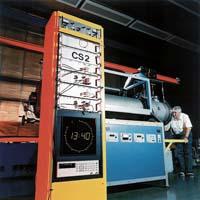
The same goes for power stations. If the signal is received from several producers, the current is alternating, in short, a type of wave. They must receive them and emit the electrical force without destructive interference. In Europe we use a frequency of 50 Hz, for example in the United States of 60 Hz. To get these frequencies it is exactly necessary to use an atomic clock. There is one in each station (fortunately, today they are cheap, only a few hundred euros are needed to buy; otherwise, the current electricity grid would be economically unsustainable).
And perhaps the most spectacular application of atomic clocks, among the most common technologies today, is GPS. It is a triangulation account. The signal is emitted by several satellites and its latitude and longitude are calculated according to the time remaining in the path. Therefore, synchronisation of signals must be very fine, including the work of atomic clocks.
Atomic clocks serve to define the second and help them manage official time scales. In fact, through radio waves they emit the signal of several atomic clocks so that the clocks of their home can be then (in Europe two clocks are used, one German and one English: Frankfurt and Rugby). But we also use a lot to synchronize our daily life.
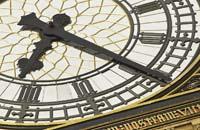
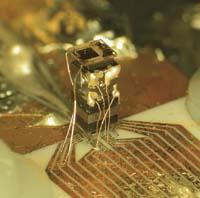

Gai honi buruzko eduki gehiago
Elhuyarrek garatutako teknologia



